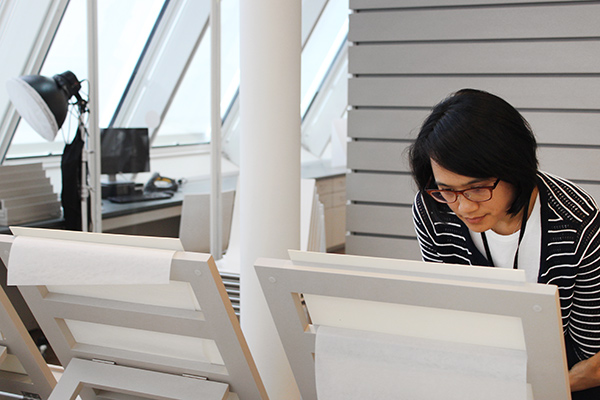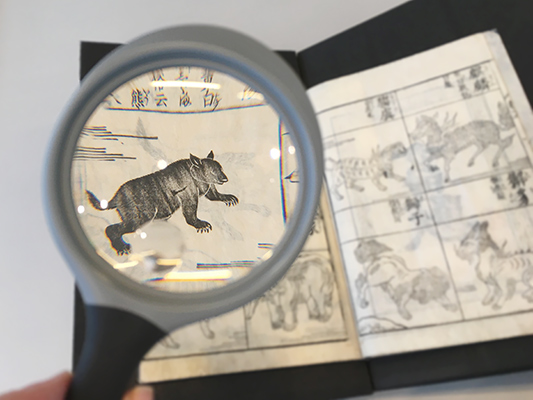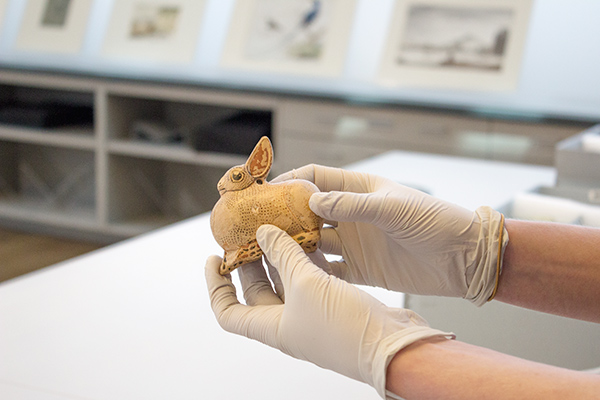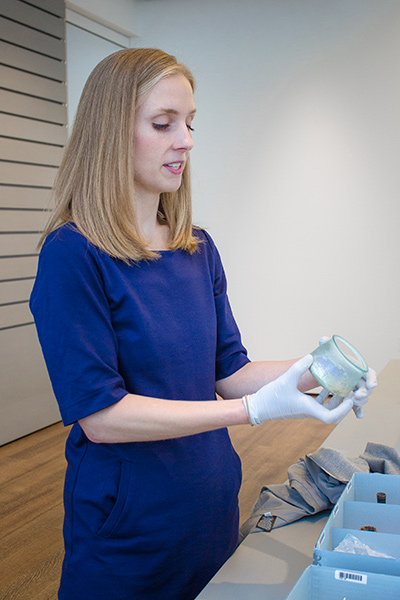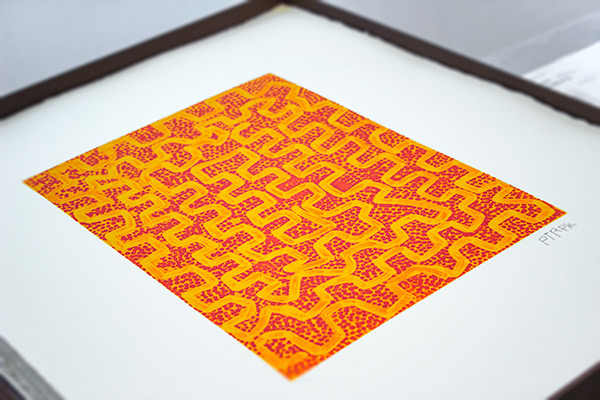On a recent Monday afternoon during the Art Study Center’s open hours, two visitors leaned in to get a closer look at the Papunya Tula Portfolio, a colorful collection of 40 etchings created by contemporary Indigenous Australian artists. Elizabeth Molacek, the Frederick Randolph Grace Curatorial Fellow in Ancient Art, served as a guide, slowly turning pages as she and the two visitors examined every print of the portfolio.
“It’s really an amazing, powerful work from our collections,” said Mary Lister, the museums’ manager of Art Study Centers. The portfolio is being presented as a complement to Everywhen: The Eternal Present in Indigenous Art from Australia. “I myself have worked with visitors who’ve been in the room for the open hours, and we’ve also gone through every single print. People really respond to the colors, patterns, and methods.”
The portfolio is on view every Monday in the Art Study Center, during the center’s weekly open hours (1 to 4pm). These are special periods when the Art Study Center welcomes any visitor aged 14 and older with an ID (and paid admission) to drop in and view a selection of works that complement the museums’ exhibitions and permanent collections installations. All works shown during the open hours may also be seen outside the open hours period, by request; and any work from the museums’ collections that is not on view may also be requested during the open hours.
Besides the portfolio, other objects displayed this summer include drawings that relate to the exhibitions Drawings from the Age of Bruegel, Rubens, and Rembrandt, and Flowers of Evil: Symbolist Drawings, 1870–1910. The objects chosen for display during open hours are refreshed as the museums’ special exhibitions change.
The weekly open hours are often hosted by one or more of the museums’ curatorial fellows, who tailor the experience to their own areas of expertise, bolstering the array of works that are regularly on view. One Harvard undergraduate made sure to come by the open hours every week throughout the spring semester, relishing the fact that he encountered new works (and fellows) each time. “He was so open to what was out each week, and always up for learning about the new material,” Lister said.
For instance, Elizabeth Molacek brought dozens of ancient objects, many of which she is currently studying for her own research projects, including ancient drinking glasses and terra sigillata pottery. During the following week, Quintana Heathman, the curatorial fellow in Japanese art, shared 18th- and 19th-century Japanese woodblock prints that illustrated the connection between Japan’s rich history of spirits and monsters and the fantastic creatures in the Pokémon GO game. A week later, Ilka Voermann, the Renke B. and Pamela M. Thye Curatorial Fellow, shared a number of works by German artist Willi Baumeister, some of which will be on view in the 2018 exhibition Inventur—Art in Germany, 1943–55.
Each fellow serves as a friendly guide and resource, with a unique perspective on the museums’ objects. “The fellows are wonderful at inspiring people to look at art that they wouldn’t necessarily gravitate toward,” Lister said, “which I think is really valuable. They’re all very gifted in creating a dialogue.”
For visitors, the open hours offer a novel opportunity to see art without glass cases or even frames between them and an original work. “In some ways, it’s a bit like a backstage tour,” Molacek said. “You can see things that aren’t normally on view, and ask questions you wouldn’t normally be able to ask.”
There’s also an element of surprise, for both visitors and fellows. “Most visitors don’t know what’s on view until they step in, so their approach to the works is usually very spontaneous and natural,” Voermann said. “You never know what kinds of questions will come up. That can be challenging, but also a lot of fun.”

